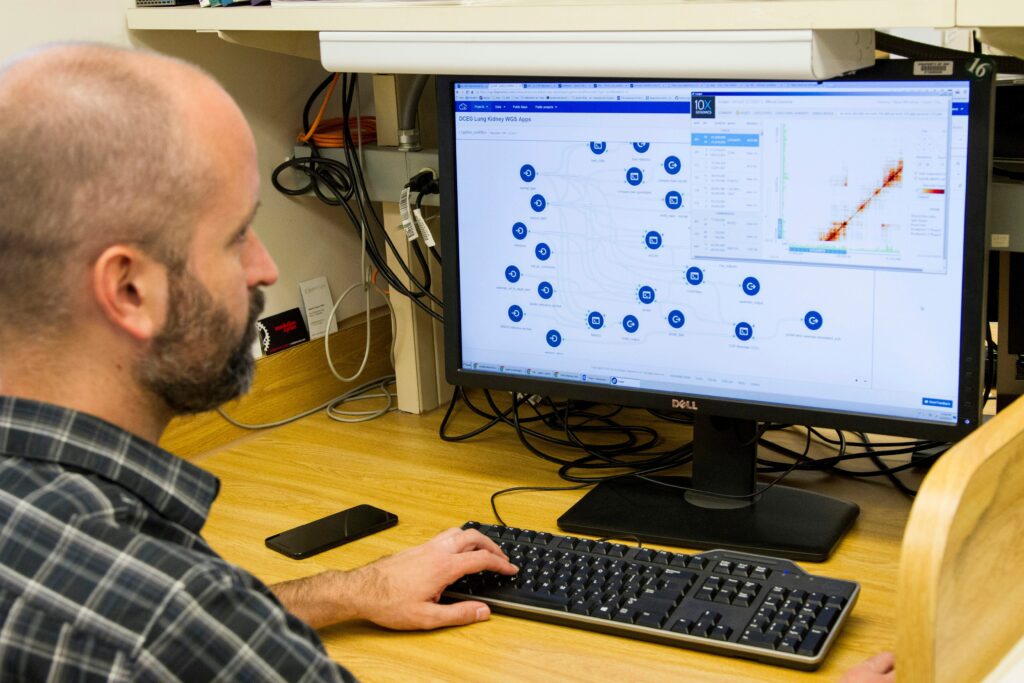
UCLA scientists have unveiled the first comprehensive map detailing the formation of the ovarian reserve in primates, offering groundbreaking insights that could transform treatments for infertility and hormonal disorders such as polycystic ovary syndrome (PCOS). The research, published in Nature Communications, marks a significant collaboration involving UCLA, Harvard, UC San Francisco, and the NIH-funded Oregon National Primate Research Center.
The ovarian reserve, a woman’s lifetime supply of eggs, is not only crucial for reproduction but also plays a vital role in hormone production. “It’s what enables women to become mothers, girls to progress through puberty, and acts like a biological clock counting down to menopause,” explained senior author Amander Clark, a professor at UCLA and a member of the Eli and Edythe Broad Center of Regenerative Medicine and Stem Cell Research. “We now have a manual that could help scientists create more accurate human ovarian models to better study ovarian disease and dysfunction.”
Understanding the Ovarian Reserve
Despite its critical role in women’s health, the development of the ovarian reserve has remained largely enigmatic. The primary challenge has been the timing of its formation, which occurs entirely before birth in humans, making it difficult to study. To circumvent this, researchers turned to the rhesus macaque, a primate sharing about 93% of its DNA with humans and exhibiting similar ovarian development.
“We needed a model that has similar physiology to humans,” said first author Sissy Wamaitha, a postdoctoral scholar in the Clark lab. “And we know from historical studies that the various steps of ovarian reserve formation in primates are very similar to what occurs in humans.”
Technological Breakthroughs in Research
The research team identified key stages in ovarian reserve development, such as initial ovary formation, female sex determination, and follicle formation. Using advanced single-cell sequencing and spatial transcriptomics technologies, they analyzed these developmental stages at the cellular and molecular levels.
“Women’s health is already understudied, but the ovary in particular has been neglected,” Wamaitha noted. “To effectively treat reproductive health conditions — as well as the growing number of general health issues we now acknowledge affect people with ovaries — we must first develop a fundamental understanding of the full scope of this organ’s function.”
Unraveling the Mystery of Mini-Puberty
One of the study’s pivotal findings provides the first cellular explanation for mini-puberty, a mysterious hormone surge occurring in babies shortly after birth. Scientists found that specialized hormone-producing cells activate in the ovary just before birth, leading to the hormone spike observed during mini-puberty.
“If we can identify risk factors in infancy that impact ovarian health, then early interventions can be made so that these women don’t suffer once they go through puberty,” said Clark, who also directs the UCLA Center for Reproductive Science, Health and Education.
For infants who do not experience mini-puberty, the absence of this hormone surge could serve as an early biomarker for ovarian dysfunction, such as PCOS, which affects approximately 10% of women worldwide.
Future Directions: Building Better Ovarian Models
The creation of this first-of-its-kind atlas has immediate implications for stem cell researchers aiming to grow more accurate ovarian organoids in the lab. Previously, efforts were stymied by a lack of detailed information necessary to verify the correct specialized cell types needed for ovarian reserve formation.
With the new map, the research team is already working on generating essential ovarian support cells from induced pluripotent stem cells. If successful, they can combine these engineered support cells with lab-grown germ cells to create sophisticated 3D ovarian models, deepening our understanding of infertility causes and accelerating treatment development.
“This project demonstrates the value of basic research,” Clark stated. “We’re advancing knowledge about an understudied organ to create tools that could meaningfully improve the health of women and girls everywhere.”
Additional authors of the study include Ernesto Rojas, Francesco Monticolo, Fei-man Hsu, Enrique Sosa, Amanda Mackie, Kiana Oyama, Maggie Custer, Melinda Murphy, Diana Laird, Jian Shu, and Jon Hennebold. The research received support from the National Institutes of Health, the University of California Office of the President, and the Iris Cantor–UCLA Women’s Health Education and Research Center.







